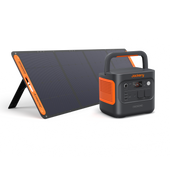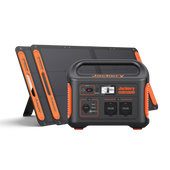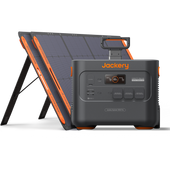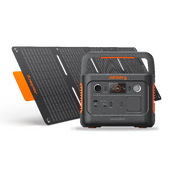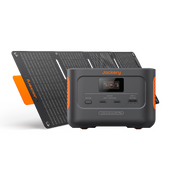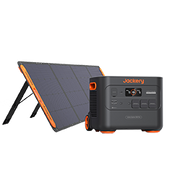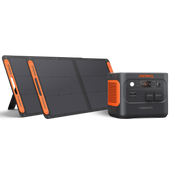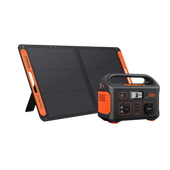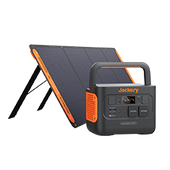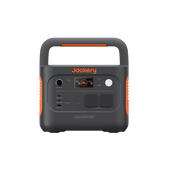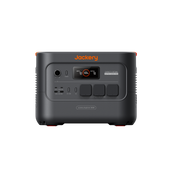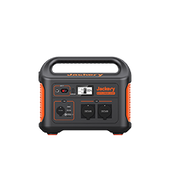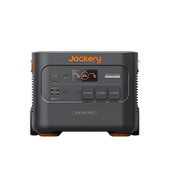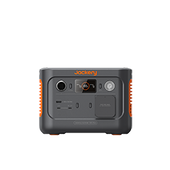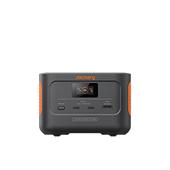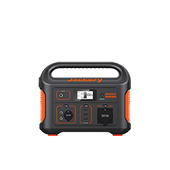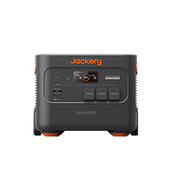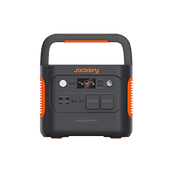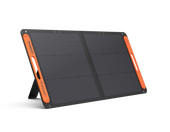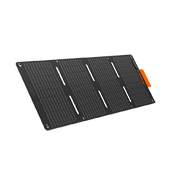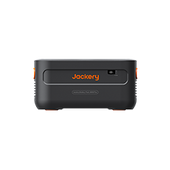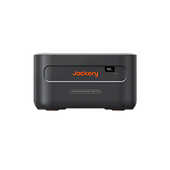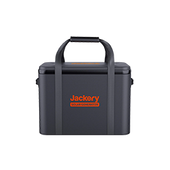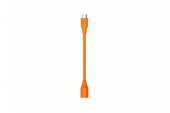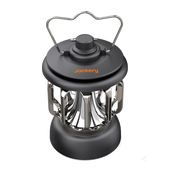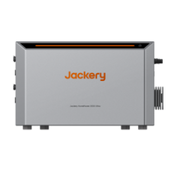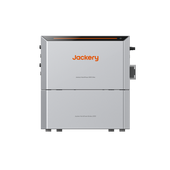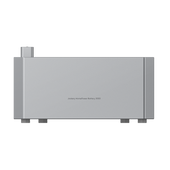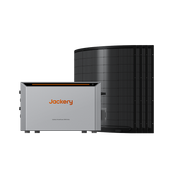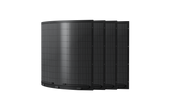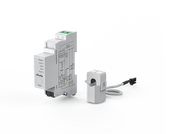Solar Generators: The Key to Renewable Energy in the EU
Given the EU's commitment to the Paris Agreement, and its ambitious Green Deal targeting carbon neutrality by 2050, a significant shift to renewables has become imperative. The shift also helps to reduce dependence on fossil fuel imports, which enhances energy security and provides economic opportunities in the form of green jobs. However, challenges remain regarding the intermittency of some renewable sources, the need for energy storage solutions, and the ecological impacts of large-scale renewable installations, all of which need careful management.

Renewable Energy Sources vs. Renewable Energy Sources
Here is the difference between renewable and nonrenewable energy sources about various factors.
1. Availability
Renewable energy sources, particularly solar energy, are nearly limitless due to their reliance on the sun, an abundant and virtually inexhaustible resource. Solar generators on surfaces with adequate sunlight can maximize energy generation. For instance, regions with high solar irradiance in Europe, like Spain or Italy, can generate more energy per square meter of solar panels installed.
On the other hand, non-renewable energy sources, such as coal, natural gas, and oil, are finite resources. They are concentrated in certain geographical areas, and their extraction and transportation are energy-intensive and costlier. Once these sources are depleted, they require millions of years to form again, implying their availability is limited on human timescales.
2. Environmental Impact
Solar energy produces virtually no greenhouse gases or harmful pollutants during operation, which makes it a clean energy source. The main environmental impact occurs during the production of solar panels, including mining raw materials and manufacturing. However, recycling schemes for solar generators are progressively efficient while reducing this impact to a great extent.
In contrast, non-renewable energy sources are known for their noteworthy environmental impact. Burning fossil fuels releases substantial amounts of greenhouse gases, like CO2 and CH4, which cause climate change. Moreover, extraction and processing of these resources often result in environmental degradation, such as oil spills or habitat disruption.
3. Long-term Viability
Solar power from solar generators stands out due to its sustainable nature in terms of long-term viability. Advances in photovoltaic technologies and energy storage solutions like advanced lithium-ion batteries are reducing the intermittent nature of solar power while increasing its reliability. Furthermore, economies of scale and high-tech developments steadily decrease solar power costs, which renders it progressively more competitive with traditional power sources.
On the contrary, non-renewable energy sources face long-term viability challenges. As the world shifts towards a low-carbon economy driven by policies like the European Green Deal, non-renewable energy sources bear stringent regulatory constraints.
The Role and Advantages of Solar Generators
Let's explore the role of solar generators in harnessing sunlight to generate renewable energy.
- Conversion of Solar Energy into Electricity:Solar generators capture solar energy through photovoltaic panels and subsequently convert sunlight directly into electricity. Essentially, this process occurs due to the photovoltaic effect, where photons from sunlight knock electrons free from atoms to generate electricity.
- Energy Storage for On-Demand Use:While equipped with batteries, solar generators store surplus energy produced during peak sunlight hours for later use. It mitigates the intermittent nature of solar power and hence provides a continuous energy supply.
Now, here we see the advantages of solar generators for renewable energy generation.
- Renewable Energy Source:As long as the sun exists, solar power remains an unlimited, sustainable resource. Unlike finite fossil fuels, solar energy's replenishment in real-time reduces the risk of energy scarcity and associated price volatility.
- Environmentally Friendly:Solar generators produce clean, green energy and contribute to reduced carbon emissions. They are silent, generate electricity without noise pollution, and do not release harmful gases or substances, preserving air quality.
- Decreased Energy Costs:After the initial investment, the cost of solar energy is practically free. Solar generators reduce dependency on grid electricity to save on utility bills. In some regions of Europe, excess power can even be sold back to the grid.
- Low Maintenance:Solar generators have few moving parts and require minimal maintenance. It leads to lower operational costs over the lifetime of the system.
- Grid Independence:Solar generators can provide power in off-grid locations, and hence they are fundamental for remote areas. In addition, they also add resilience during grid failures, which serves as a backup power source during outages.
Jackery Brand in the Portable Power Station Market
Jackery has a superb reputation in the portable power station market, recognized for its innovation and quality products. Jackery is renowned for its lithium battery power stations that offer a reliable and clean sine wave output. Their products excel in powering a wide range of electronics and appliances with utmost safety and efficiency. With built-in MPPT controllers that increase charging efficiency, multiple output options for various devices, and an LCD screen that provides real-time status updates, Jackery's power stations offer convenience and user-friendliness that distinguishes them in the market.
Let's now introduce Jackery's best solar generators for renewable energy production in the EU.
Jackery Solar Generator 1500 Pro

Jackery Solar Generator 1500 Pro presents a robust solution for renewable energy production in the European Union, with unique and innovative features that align with the region's eco-friendly initiatives. The system combines the Jackery Explorer 1500 Pro Portable Power Station and the Jackery SolarSaga 200W Solar Panel for an efficient solar-to-electricity conversion setup. It has a battery capacity 1512Wh and can power up to 95% of standard household devices with its vast array of outlets, including three 1800W AC charging ports, two USB-A outputs, two USB-C charging ports, and a car charger.
The model's ultra-solar charging capacity allows it to recharge fully in as little as two hours when used with up to six Jackery SolarSaga 200W Solar Panels. Further, the system employs a state-of-the-art BMS with 12 forms of protection, 8 temperature sensors for safe temperature control, and a multi-duct design for improved heat dissipation. Jackery Solar Generator 1500 Pro boasts 2000 charge cycles at 70% power, suggesting its durability and longevity while being light and compact for easy portability.
Another worth-noting factor for its suitability in the EU is that it comes with European sockets with two round pins, which helps increase its compatibility with regional devices. The product is also designed to be compatible with all Jackery portable solar panel models while extending its adaptability and potential for renewable energy generation. Lastly, Jackery offers comprehensive support through a 3+2 years warranty and a 30-day money-back guarantee, eventually making the Jackery Solar Generator 1500 Pro a superlative choice for sustainable energy production in the EU.
Jackery Solar Generator 1000 Pro

Jackery Solar Generator 1000 Pro offers a compelling solution for renewable energy production in the European Union, bringing together practicality, versatility, and durability. With a 1002Wh capacity and a 1000W inverter (2000W surge), it offers sufficient power to meet off-grid living requirements or serve as an emergency backup. Notably, the fast solar charging capability enables full recharge in just 1.8 hours, thanks to its Maximum Power Point Tracking (MPPT) technology that ensures 99% solar charging efficiency.
Assuming weekly usage, the generator's life expectancy of over 10 years renders it a long-term, sustainable energy solution. What's more, it has an industry-leading battery management system that provides 12 layers of protection, including protection against short circuits and overvoltages, while enhancing safety. Its ability to power up to 85% of appliances, from phones and laptops to refrigerators and e-bikes, via multiple port types underscores its versatility.
Importantly, its design factors in outdoor use are lightweight (25.4 lbs.), portable, and rugged, with shock and flame resistance. Its solar panels are water- and dust-proof and perform well in high-temperature and cold environments. Jackery Solar Generator 1000 Pro is also specifically designed for the European market, featuring sockets with two round pins used widely across the EU. It ensures its adaptability and readiness for use within this specific geographic market.
EU's Use of Solar Generators to Empower Renewable Energy
Now comes the time to describe the EU's use of solar generators to empower renewable energy.
1. The Role of Solar Generators in Residential and Commercial Applications
Solar generators have emerged as an essential component of the EU's strategy for renewable energy, notably within residential and commercial settings. Photovoltaic systems, the core technology in solar generators, function by converting solar radiation into direct current electricity. Highly efficient solar generators in the EU use advanced materials like monocrystalline silicon and perovskite cells, which achieve conversion efficiencies of over 20% and 25%, respectively.
Through net metering policies, surplus power generated is fed back into the grid, acting as a credit against energy consumed during non-production hours. It leads to substantial energy cost savings and is highly desirable in urban areas like Munich and Madrid, where sunlight exposure is optimal. Advancements in inverters, energy storage, and management systems have improved the reliability and scalability of solar generators, and they are feasible for large-scale commercial operations.
2. Powering Homes, Businesses, and Remote Areas with Clean Energy
In line with the EU's pledge to achieve climate neutrality, remote areas are particularly targeted for solar energy deployment. Hybrid microgrid renewable energy systems combining solar PV systems with energy storage systems like Li-ion batteries and advanced lead-acid batteries are being implemented. The microgrids include a management system that utilizes machine learning algorithms to optimize energy generation and consumption, ensuring a steady power supply.
This strategy has proven especially effective in the rural areas of Portugal, Sweden, and Greece to offer clean and sustainable power to communities previously relying on diesel generators. Moreover, implementing Building-Integrated Photovoltaics (BIPVs) is transfiguring the urban landscape. BIPVs incorporate solar cells into building materials, such as glass, facade, or roof tiles, which assist in turning buildings into decentralized power plants. The EU-funded project "BIPVBOOST" has accelerated this process by reducing the cost of BIPV solutions.
3. Off-Grid and Emergency Power Solutions that Improve Resilience
Solar generators are helpful for off-grid and emergency power applications while improving resilience during power outages or in regions where the electric grid is unreliable or non-existent. For example, portable solar generators equipped with high-capacity lithium batteries are increasingly used in the Nordic regions as emergency power backups during severe winter storms.
Besides that, standalone solar power or islanded systems are gaining traction in remote and island communities in the Mediterranean. Indeed, these systems employ a powerful combination of solar PV, energy storage, and sometimes wind or hydro resources integrated via smart grid technology. Consequently, it enables efficient energy management, distribution, and automation. It can also be designed to disconnect from the main grid during outages while providing an uninterrupted power supply and enhancing regional resilience against power disruptions.

The EU's commitment to renewable energy, underscored by its aggressive targets, has elevated the worth of innovative power generation technologies like solar generators. Our in-depth examination of various solar generator models identified the Jackery Solar Generator 1500 Pro and Jackery Solar Generator 1000 Pro as particularly well-suited for the EU's unique energy landscape.
With high conversion efficiencies, these models facilitate the effective harnessing of solar energy while aligning with the EU's renewable energy objectives. By adopting the Jackery Solar Generators 1500 Pro and Jackery Solar Generator 1000 Pro, the EU can bolster its renewable energy capacities while securing a resilient, decentralized, and sustainable power infrastructure for the future.

